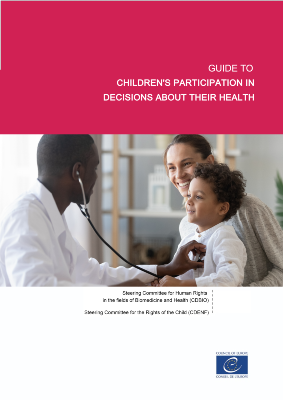Children’s participation in decisions about their health
This video was developed by TEDDY Network and TEDDY Kids, in coordination with the Council of Europe. A group of children took part in its design; they were aged between 12 and 18 years, coming from Italy, France, Greece and Albania, and included young patients and healthy children. It targets children of a similar age group.
Guide to children’s participation in decisions about their health

Read the guide |
Dowload the guide
The Guide provides information and advice, primarily for healthcare professionals, about how to involve children in decision-making processes regarding their health. It starts by presenting the theoretical and legal context and progresses to describe important components of the decision-making process, helping health professionals to understand their role in supporting children, families, and other professionals to enact this in practice. Key concepts of consent, assent, and ‘best interests’ are discussed, as well as common healthcare situations where participation in decision-making may sometimes be perceived as more challenging. Examples and links to good practice are provided throughout.
Background
International human rights instruments recognise that children are rights holders with evolving abilities to make decisions in all aspects of their lives, including their health.
Research provides evidence that there are multiple benefits to involving children in decisions about their health; in fact, meaningful participation of children is considered an important contributor for achieving high-quality care for children.
However, there can be uncertainty as to how to support and foster effective child participation in real-world healthcare situations that are often complex, accounting for differing legislative frameworks and for the varying role played by other actors, namely the parents and health professionals, in the decision-making process.
Children across Council of Europe Member States may currently experience different situations and may encounter varying practices as regards their participation in healthcare decisions. Child participation may be more effective in some settings, but there remains room for improvement in all countries.









